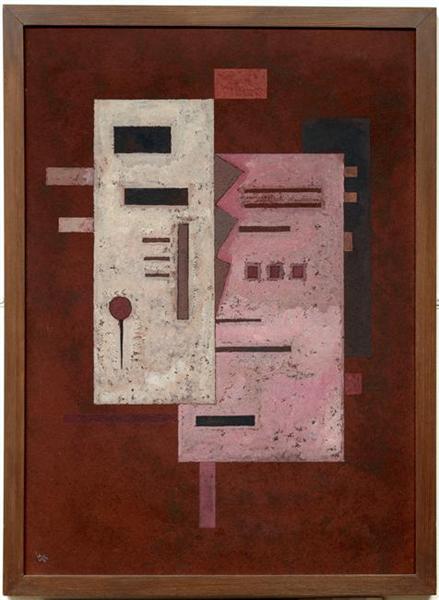Description
The painting "soft roughness" of 1933, created by Wassily Kandinsky, is a work that encapsulates the essence of its abstract style and its search for emotional harmony through shape and color. As one of the pioneers of abstract art, Kandinsky took the painting beyond figurative representation, entering a world where emotion and intuition predominate over the narrative. In this particular work, these characteristics are manifested in a remarkable way, as well as their interest in synesthesia the interrelation of the arts where color evokes emotions and tactile sensations.
When observing "soft roughness", we find a composition where organic forms and dynamic lines coexist in a vibrant space. The work is dominated by a colored palette that varies from soft pastel tones to darker and deep nuances, creating a contrast that results in a rich and enveloping visual experience. This mixture of tones suggests a duality that can be related to the title of the work, involving a softness quality that is intertwined with the roughness of certain forms and lines.
The ways in the painting lack an explicit figurative representation, which allows the viewer to project their own interpretations and emotions on what he observes. The relationship between shapes and colors is designed not only to attract the gaze, but also to generate an internal dialogue in the one who contemplates. The straight lines and curves that live on the canvas seem to dance, transporting the viewer to an abstract space where the logic of reality is suspended. This invites a subjective reflection on the experience of life itself: chaos and order, serenity and intrigue, the soft murmur of a melody and the abrupt rupture of a dissonant chord.
The use of color in "soft roughness" is especially significant. Kandinsky was deeply interested in color theory, and in this work his ability to use it as an emotional expression vehicle is manifested. The softest tones can evoke a sense of calm, while the most intense and dark elements can suggest conflicts or tensions. This color game and its disposition in the painted space invite an introspective exploration that is characteristic of their work.
Wassily Kandinsky, born in Russia in 1866, later moved to Germany, where it became a central figure of the artistic movement known as Der Blaue Reiter (the blue rider). This group, which promoted abstract art and spirituality in it, strongly influenced its style and pictorial philosophy. Kandinsky not only applied an innovative approach in his work, but also wrote extensively about art, which helped establish a theoretical basis for modernism.
"Soft roughness" can be understood in the context of its artistic evolution and its continuous search for the essence of art. When observing this work, we connect with a broader dialogue, which invites us to experience art not only as a visual object, but as a phenomenon that resonates in our emotional and sensory experience. The work thus becomes a testimony of Kandinsky's vision, where painting goes beyond the visual and becomes a means to explore the ineffable, inviting each spectator to their own discovery trip.
KUADROS ©, a famous paint on your wall.
Hand-made oil painting reproductions, with the quality of professional artists and the distinctive seal of KUADROS ©.
Art reproduction service with satisfaction guarantee. If you are not completely satisfied with the replica of your painting, we refund your money 100%.

